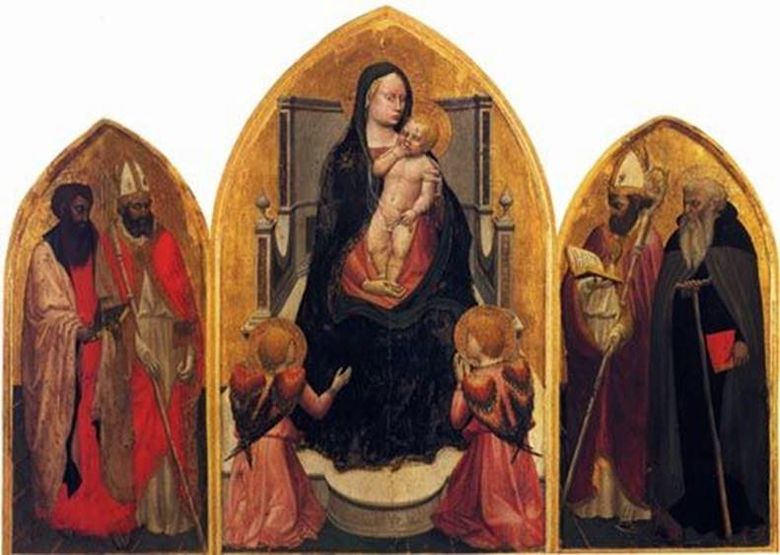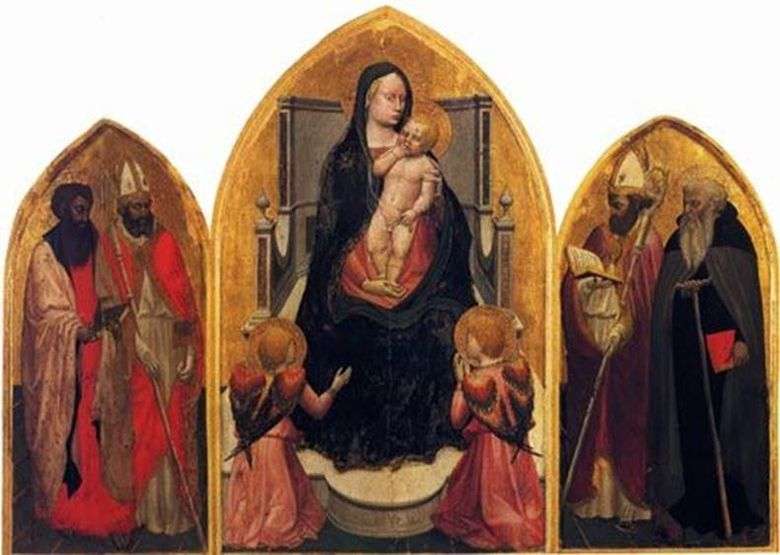
For more than 500 years, this small altar image remained in the village church, just a few miles from the birthplace of Masaccio. But in 1961, the image was presented in Florence, where he immediately attracted the attention of art historian Luciano Berti, one of the recognized experts on Italian painting of the XV-XVI centuries.
Bertie first suggested that this altar image was painted by Masaccio. At the bottom of the panel is the date of April 23, 1422, and almost all experts agreed that this is the earliest surviving work of Masaccio.
The manner of the artist looks here is not yet well established, but quite recognizable, and – most importantly – individual. There is a clear desire in this work to move away from the elegant, but cold Gothic style towards the lively, naturalistic manner of the Early Renaissance.
Researchers believe that this altar image was commissioned by a member of the Castellani family, a wealthy landowner. The most likely candidate for the role of the customer is Vanni Castellani, who died in March 1422, a month before the end of the work of Masaccio.
It is known that the emblem of Vanni was two crossed bishop staffs – a detail repeated here on the figures of saints. All the saints depicted on the altar image are closely associated with local churches.
 Vierge aux anges et aux saints (triptyque de San Jovenale) – Masaccio
Vierge aux anges et aux saints (triptyque de San Jovenale) – Masaccio Virgen con ángeles y santos (tríptico de San Jovenale) – Masaccio
Virgen con ángeles y santos (tríptico de San Jovenale) – Masaccio Madonna and Child, surrounded by angels, with Saints Frediano and Augustine by Filippo Lippi
Madonna and Child, surrounded by angels, with Saints Frediano and Augustine by Filippo Lippi Madonna and Child with Angels by Tommaso di Giovanni Masaccio
Madonna and Child with Angels by Tommaso di Giovanni Masaccio Saints Jerome and John the Baptist by Tommaso di Giovanni Masaccio
Saints Jerome and John the Baptist by Tommaso di Giovanni Masaccio Altar Obra by Masaccio
Altar Obra by Masaccio Madonna Cassini by Masaccio
Madonna Cassini by Masaccio Adoration of the Magi by Masaccio
Adoration of the Magi by Masaccio